Mark Bradford
Shall Rest in Honor There
Shall Rest in Honor There
Price available upon request
Mark Bradford
Shall Rest in Honor There
2023
Mixed media on canvas
184.1 x 244.5 x 5.4 cm / 72 ½ x 96 1/4 x 2 ⅛ in
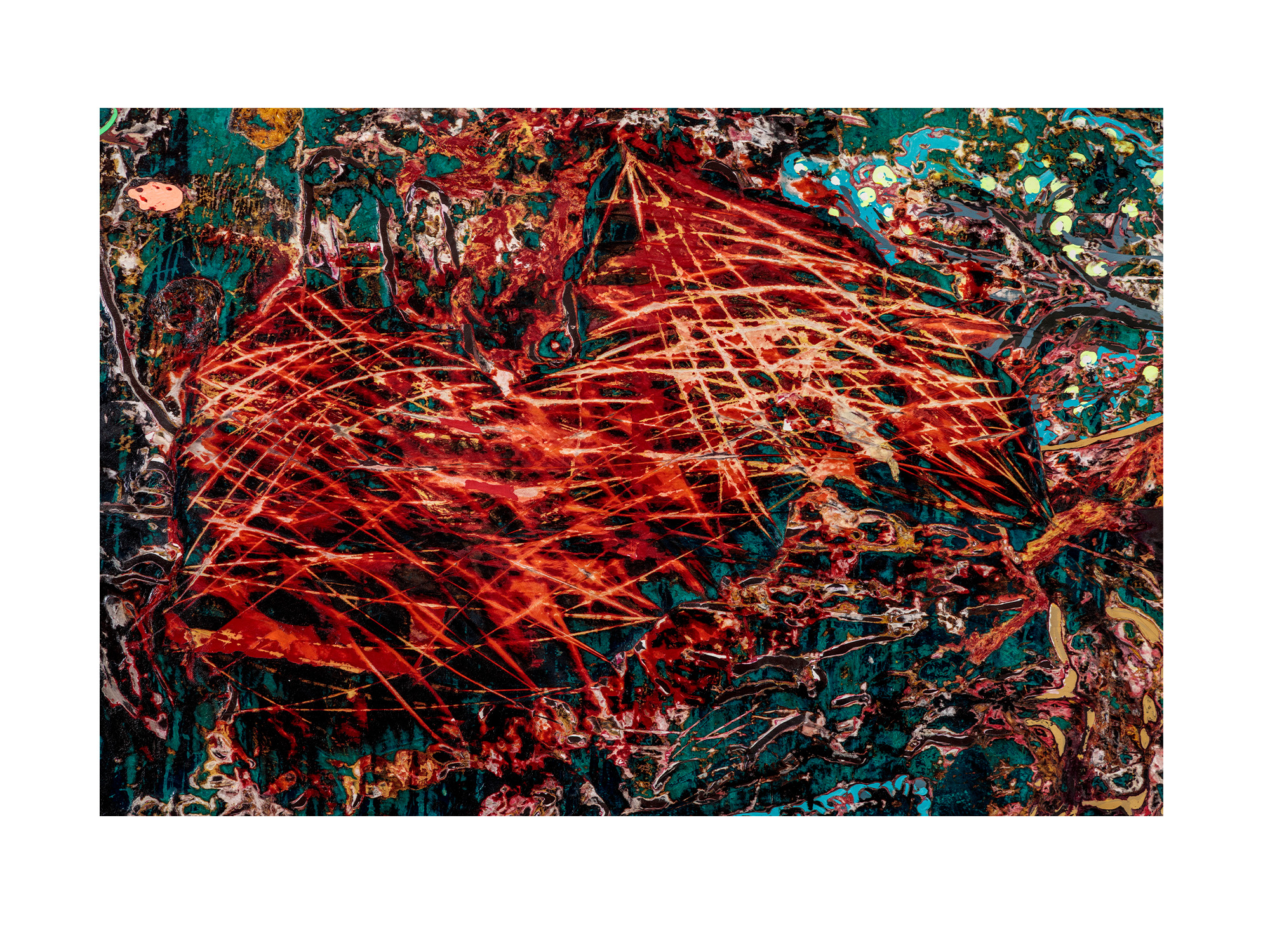
Named after a line from Herman Melville’s poem ‘Gettysburg’, ‘Shall Rest in Honor There’ (2023) features crisscrossing lines of electric red that evoke crossfire on a field of battle. Expanses of cyan mottled with lime lesions rest on a plane of striaited Brunswick green like bodies of water in a forest. Best known for his complex and multi-layered abstract paintings that explore systems and institutions that subjectify marginalized individuals, Bradford here returns to the American Civil War and the circularity of history, which never repeats but often rhymes.
‘I’m not good at describing the real. I’m good at pointing to it in an emotional way or an intense way’—Mark Bradford [1]
‘Shall Rest in Honor There’ closes the final stanza of Melville’s poem, a description of the terminal assault by the Confederate soldiers on the Union Army known as Pickett’s Charge. Returning to this subject matter for the first time since his commissioned work in the rotunda of the Hirshhorn Museum and Sculpture Garden, Bradford abstracts the Battle at Gettysburg, stripping it of recognizable figures and offering a rich illustration of the brutality of battle, extrapolating the lessons of the Civil War to contemporary society.
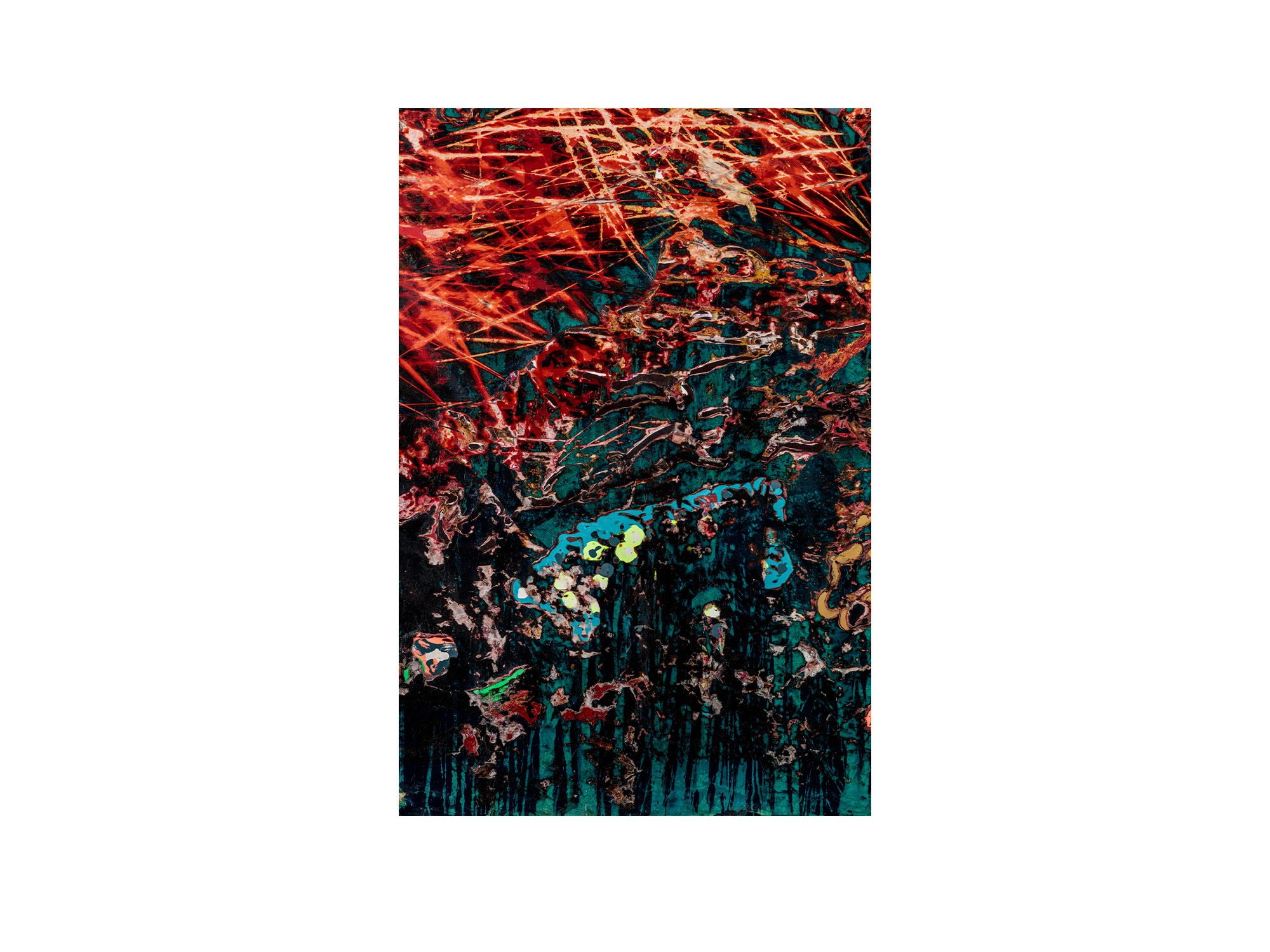
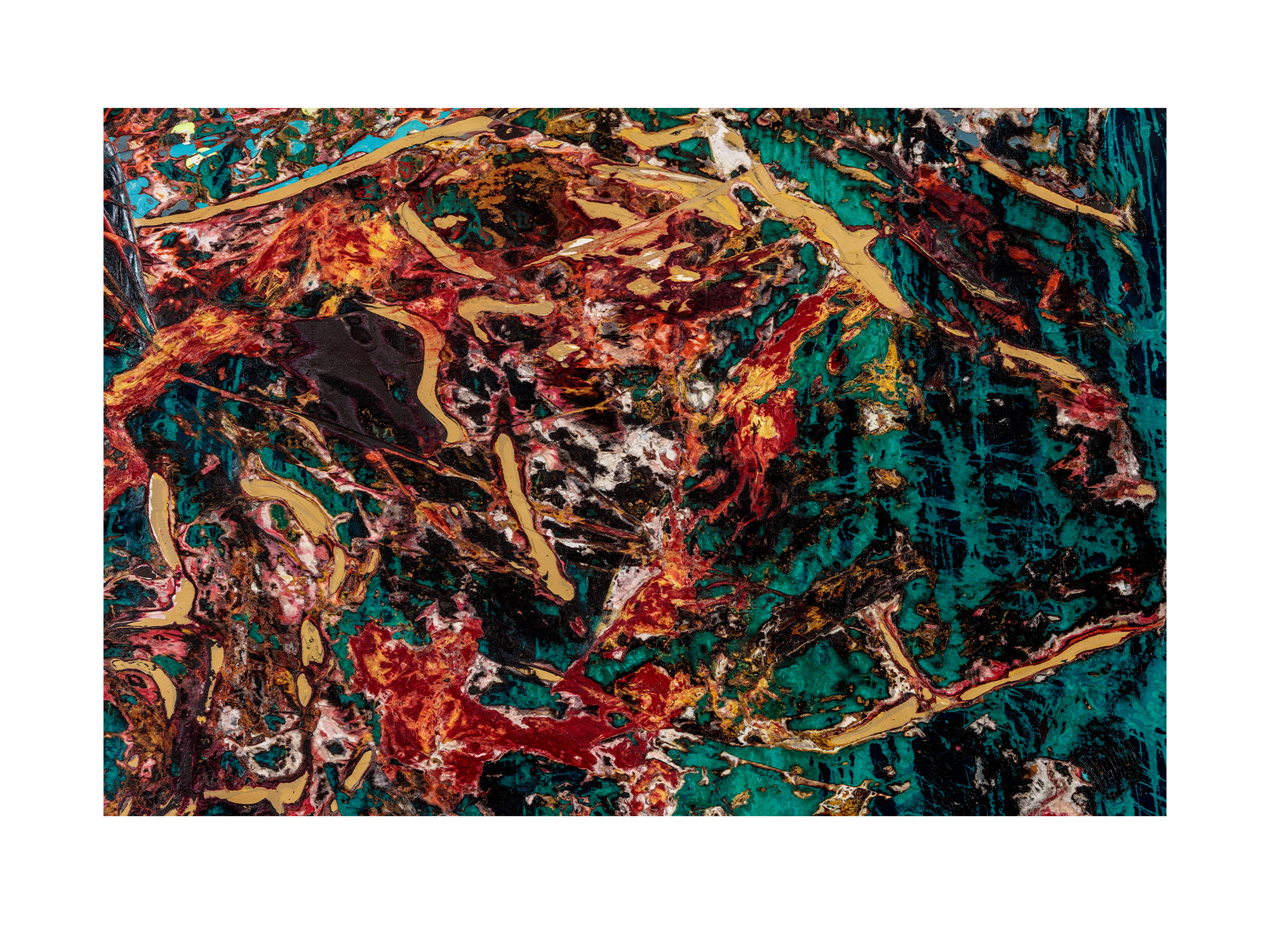
Bradford’s practice diverges from the traditional visual and material language of painting, bridging the gap between abstraction and the lived world – construction paper and power tools replacing oil, acrylic, and paintbrushes. Intricate layers of material, accumulated on the surface of the canvas before being processed through Bradford’s signature techniques, create stains, remnants, and wrinkles that result in striking textural patterns. The material and formal complexity calls for repeated and close looking, mirroring the intricacy of Bradford’s own insightful observations about his world.
The accumulative and reductive processes in Bradford’s work develop from the parameters imposed by his materials of choice. Softening paper, applying it canvas, and letting it dry creates a rigid surface that requires unique and unfamiliar artistic processes of excavation–deconstructive physical gestures that parallel the atrophy consuming our environment. Bradford’s formative techniques are vested with these deliberate parameters, and when he moves away from identifiable signifiers, form, process, and material leaven the work with meaning and history.
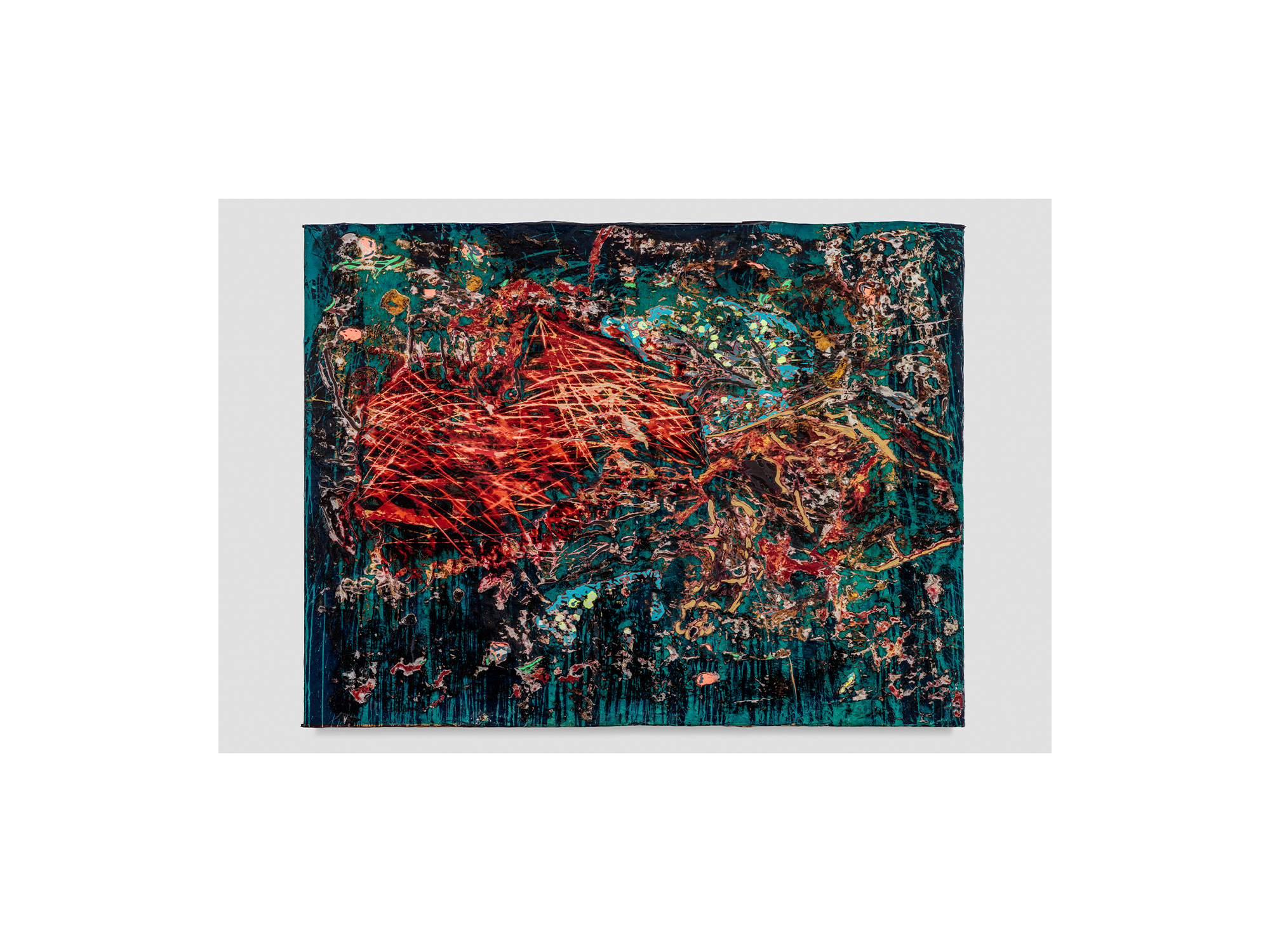
‘Faced with Bradford’s layers of distressed paper, our eyes are drawn into a state of incomprehension, a black hole of knowing. Their layers, I like to think, express Bradford’s heightened consciousness of the impossibility of certain realities — people’s actual experiences (as opposed to the versions of them presented in the news or on social media or even on placards at rallies) — being represented at all.’—Sebastian Smee [2]



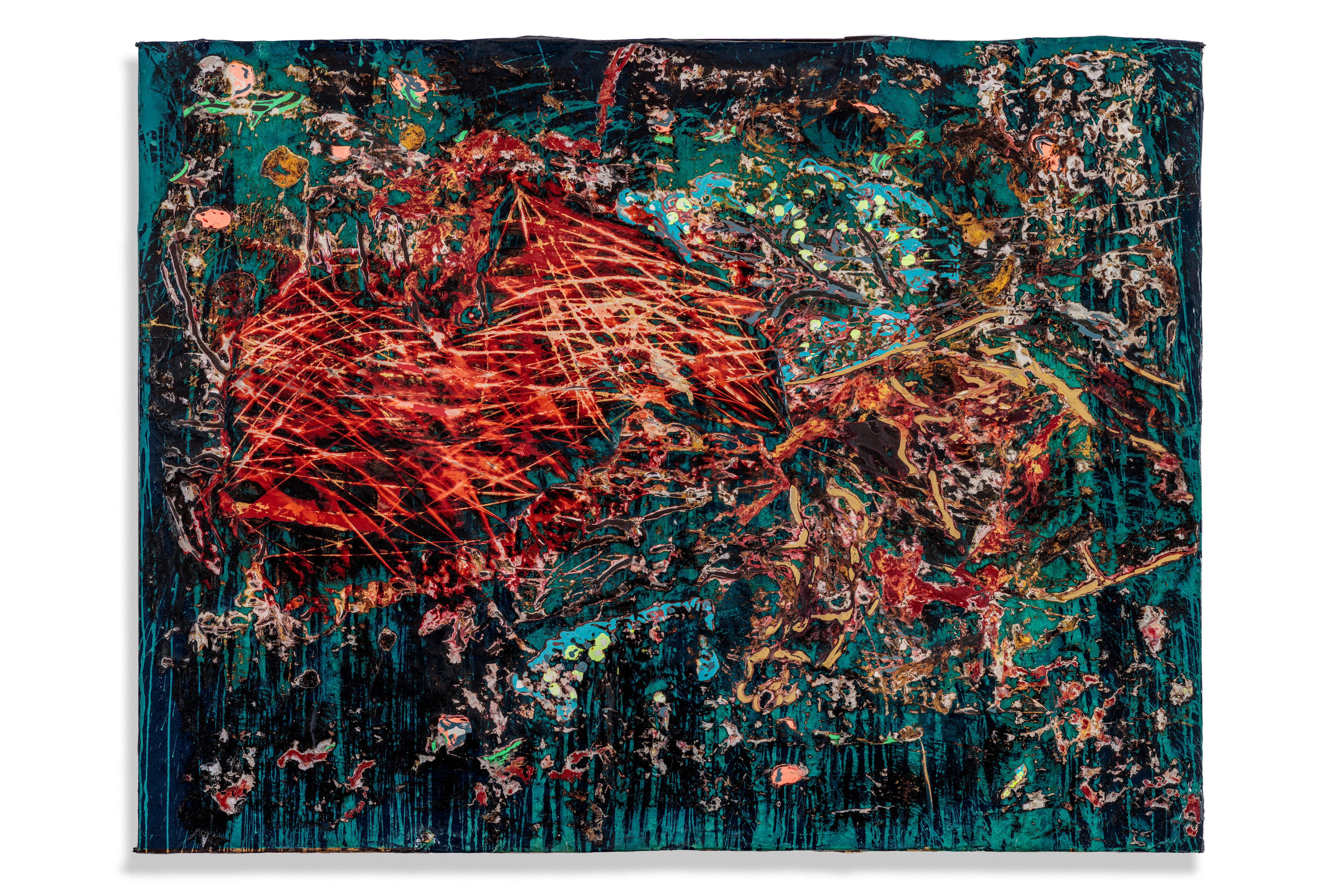
 Mark Bradford (b. 1961 in Los Angeles; lives and works in Los Angeles) is a contemporary artist best known for his large-scale abstract paintings created out of paper. Characterized by its layered formal, material, and conceptual complexity, Bradford’s work explores social and political structures that objectify marginalized communities and the bodies of vulnerable populations. Just as essential to Bradford’s work is a social engagement practice through which he reframes objectifying societal structures by bringing contemporary art and ideas into communities with limited access to museums and cultural institutions.
Mark Bradford (b. 1961 in Los Angeles; lives and works in Los Angeles) is a contemporary artist best known for his large-scale abstract paintings created out of paper. Characterized by its layered formal, material, and conceptual complexity, Bradford’s work explores social and political structures that objectify marginalized communities and the bodies of vulnerable populations. Just as essential to Bradford’s work is a social engagement practice through which he reframes objectifying societal structures by bringing contemporary art and ideas into communities with limited access to museums and cultural institutions.